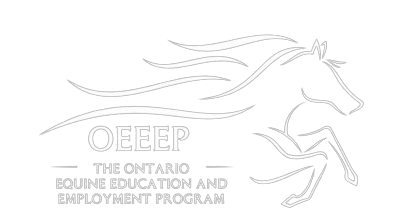Quotes from 2019 AG report on Horse Racing
Ontario’s 15 racetracks currently rely on annual government funding of close to $120 million to subsidize the horse racing industry in the province. In addition, 11 of these racetracks host provincial slot facilities, and receive about $140 million in annual lease revenues from OLG and private operators to host slot machines, and, in some cases, for valet parking and food services. Current government agreements do not require that these annual lease revenues be used to support horse racing operations.
In March 2018, the province announced a new 19-year funding commitment to support the horse racing industry. Starting April 2019, the new long-term agreement provides about $120 million to the industry annually for the first two years and is expected to drop to about $65 million in the fifth year and to $63.4 million by the eighth year.
Further funding reductions to the long-term funding exist if OLG chooses not to accept the industry’s proposals for capital improvements and the horse improvement program beyond the 2025/26 fiscal year. The potential annual reduction in these areas is $16 million.
However, OLG’s funding obligations are more likely to decrease by $51.4 million when Woodbine receives incremental casino lease revenues from its racetracks.
Although the horse racing industry receives a significant amount of public funding, it lacks transparency and public accountability. Of the 15 racetracks, only one posts its financial statements on its website. There is no public reporting of gross wagers collected and wagering commissions by racetrack, how the provincial tax reduction on wagering is shared between the various racetracks and horse people, purses paid by racetracks, revenue and expenses related to racing operations separate from other operations, and key statistics such as the current number of people working in the industry.
For 2018/19, provincial funding covered 60% (or $84.8 million) of total purses paid of $142.3 million to winning horse owners.
In 2018/19, about half (48%) of industry revenues were generated from non-government sources. These revenue sources include gross commissions on wagering before taxes ($203.5 million) and food sales at racetracks ($75.4 million). The province provided the remaining 52% ($299.4 million), including funding for purses, racetrack operating costs and breeding programs ($100.3 million), a tax reduction on wagering ($57.5 million), and lease revenue ($141.6 million) provided by OLG and its service providers to racetracks for hosting casino and slot machines.
NB: Total Industry Revenue $578 million. Total purses for all three breeds in 2018/2019 $142.3 million
The funding agreement negotiated between OLG and Woodbine includes language that effectively cancels the agreement if Woodbine’s role is changed or eliminated. Specifically, the funding agreement ceases to be valid if Woodbine ceases to be a member of Ontario Racing; Woodbine’s subsidiary (Ontario Racing Management) ceases to be owned 100% by Woodbine; or Woodbine’s subsidiary ceases to be responsible for the management of Ontario Racing.
Ontario has 15 licensed horse racing tracks; 11 of these are co-located with provincial slot facilities.
OLG told us that it had not conducted an economic impact study earlier because it did not have the internal capacity to do so. The Horse Racing Division at OLG was formed in 2016 with four staff. It had 10 staff by March 2019.
Ajax Downs made a $4.8 million donation to a charitable foundation. The racetrack operator told us that this was done to increase its corporate profile. It stated that this funding was received from a related party as a loan, which is expected to be paid back in full. This racetrack received $4.1 million in government support for purses and operations in 2018/19 and will receive $5.1 million in 2019/20.
Clinton Raceway made a $150,000 donation to help the municipality build a splash pad at a nearby park. This raceway received $151,000 in government support for purses in 2018/19 and will receive $944,000 in 2019/20 for purse support and capital improvements.
In another instance, a racetrack paid $250,000 in severance, negotiated directly with the board of directors, to a retiring senior staff member.
The funding for the 15 racetracks under the new long-term funding agreement is expected to remain consistent for the first two years until the end of the 2020/21 fiscal year. There is no guarantee that all 15 racetracks will be funded beyond 2021, as the responsibility for deciding how funds are to be allocated and to which tracks has transferred from the province to the industry through Ontario Racing.
The 19-year, long-term funding agreement was negotiated primarily between Woodbine and OLG, and Woodbine was made the administrator for Ontario Racing. In May 2018, a subsidiary of Woodbine (Ontario Racing Management) was contracted to provide all management and operational services on behalf of Ontario Racing. Key members of the management team of Ontario Racing Management are also employees of Woodbine.
As well, Woodbine, along with OLG, Ontario Racing, and Woodbine’s subsidiary (Ontario Racing Management) are the only signatories to the new 19-year, long-term funding agreement. In addition, key events that would constitute a default of the agreement involve Woodbine. For example,
- Woodbine ceases to be a member of Ontario Racing;
- Woodbine’s subsidiary (Ontario Racing Management) ceases to be a wholly-owned subsidiary of Woodbine; and
- Woodbine’s subsidiary ceases to be responsible for the management of Ontario Racing.
Under the Horse Racing Partnership Funding Program which ended March 2019, the salaries and names of racetrack employees making over $100,000 were disclosed on OLG’s website by racetrack. We noted that 69 racetrack employees made over $100,000 in 2018. Most of them (62 people or 90%) were Woodbine employees.
Furthermore, we noted that a review conducted by a third party engaged by the AGCO in 2012 identified excessive pay-outs to retired executives at Woodbine. At that time, the industry was sharing in revenues generated by slot machines at racetracks. Neither the AGCO nor OLG, which has been responsible since 2016 for ensuring the appropriate use of provincial funding by the horse racing industry, has performed any similar reviews since then, despite the government’s millions of dollars in direct support payments to the industry. Without this support, racetracks would have to use their own funds to support purses, which would leave less money for salary-related expenditures and other operating costs.
Critical decisions about how provincial funding is to be allocated amongst racetracks and which racetracks to close, if any, are in the hands of the industry.
Three of the four horse people associations we met with were in favour of consolidating racetracks in Ontario. They believe that with fewer tracks, horses will be re-allocated between fewer tracks, which would increase the number of horses running in any race. (We met with key stakeholder groups representing horse people. These groups include the Canadian Thoroughbred Horse Society (representing Thoroughbred breeders), the Standardbred Breeders of Ontario Association, the Central Ontario Standardbred Association (representing Standardbred horse people), and the Ontario Harness Horse Association (also representing Standardbred horse people).
OLG told us that it had not conducted an economic impact study earlier because it did not have the internal capacity to do so. The Horse Racing Division at OLG was formed in 2016 with four staff. It had 10 staff by March 2019.
However, despite OLG’s awareness campaign whose ultimate goal is to increase wagering revenue to help the industry become self-sustaining, wagering on horse racing by people in Ontario continues to decline. OLG has no data to assess whether the marketing initiatives generated increased wagering revenue for the industry overall.
Ontario Racing Management, a wholly-owned subsidiary of Woodbine under contract with Ontario Racing, now provides all material management and operational services for Ontario Racing. According to OLG, Woodbine was made the administrator for Ontario Racing because it was a logical choice given its expertise in gaming and how well it managed the Standardbred Alliance.
Under the new long-term funding agreement, the amount paid to Woodbine’s subsidiary to administer the funding has almost doubled to $3.4 million annually. Previously, the Ministry of Finance was funding OLG $1.8 million annually to administer and provide oversight over the Horse Racing Partnership Funding Program. OLG told us that the $3.4 million in administration costs was an amount negotiated with Woodbine. NB: Woodbine Corporate report indicates that Woodbine also pays Ontario Racing Management an additional $4.5 Million per year.
We noted that non-Woodbine tracks indicated to the province in 2018 that they did not have sufficient information about how Woodbine deploys its resources for the benefit of the sector.
The objectives of the new long-term agreement are to reduce reliance on government funding, increase support for racetracks not operated by Woodbine, improve access to revenue streams (for example, off-track betting) for all parts of the industry, provide a unified industry voice and improve industry transparency.
Disclosure Limitation
As part of our report, we wanted to provide members of the Legislature with information about the net financial position (revenues less expenses) for 2018/19 for each racetrack, with and without government support, to present more complete and transparent information about racetrack sustainability. However, to disclose this information for racetracks owned and operated by Woodbine Entertainment Group (Woodbine), we required the written consent of Woodbine under section 10.6 of the provincially negotiated funding agreement for the Horse Racing Partnership Funding Program. Woodbine did not provide its consent. According to Woodbine, its financial statements are prepared on the understanding that they are for limited distribution. As Woodbine accounts for about 90% of wagering income and over 70% of purses, presenting information without including Woodbine would not be informative.


